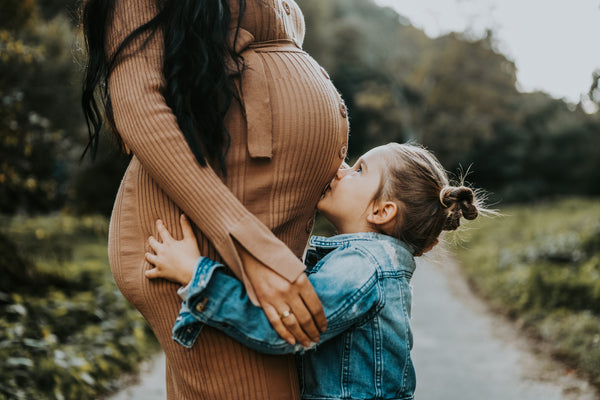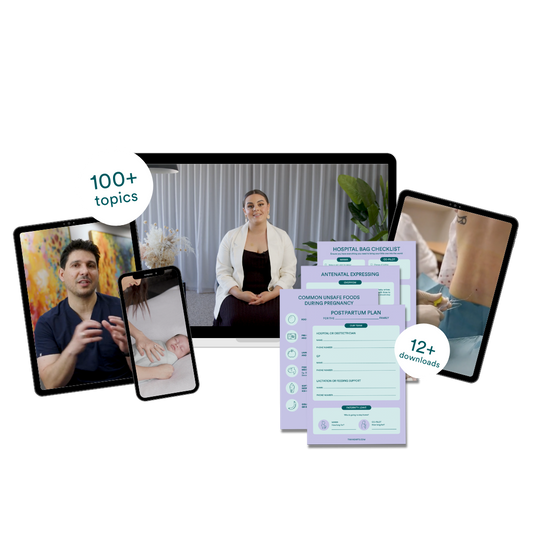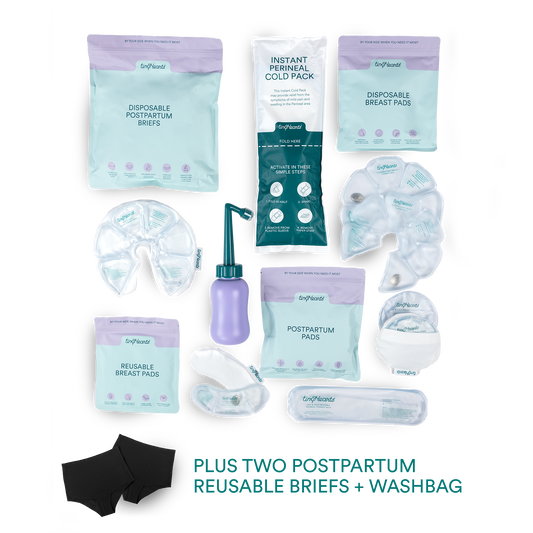There’s nothing more exciting than seeing our bubs start to crawl, walk, stand or even run. At this stage of life, our babies’ are more curious than ever - meaning that want to explore every inch of their humble abode!
However, unknowingly to our children, the home often possesses many risks and dangers that could potentially harm them. Therefore, it's essential for us as parents to baby proof our homes so our little ones can explore everything life has to offer.
Feeling overwhelmed by the thought? We’d be surprised if you weren’t - it’s a huge task but never fear, the friendly team from Tiny Hearts First Aid has developed the ultimate baby-proofing checklist for your home.
The Kitchen

The kitchen is the heart of the home, and there is no doubt that you’ll spend quality time in here with your bub. In conjunction with food and cooking utensils, kitchens are home to many cleaning products and medicines, which if ingested can result in severe injury or illness.
Our top tips for baby-proofing your kitchen are:
- Ensure all appliances are far away from the edge of bench tops or bolted to walls to prevent tips.
- Ensure all power points are fitted with adequate covers, especially if at ground level.
- Place child safety locks on all cupboards that your child may be able to reach (e.g. ground-level storage).
- Place a safety gate at the entrance of the kitchen, so they don’t wander in while you’re cooking or cleaning.
- Ensure that your little one’s highchair is stable and correctly fitted with a five-point harness to prevent dangerous falls.
- Keep all cleaning products in a locked cupboard, preferably above ground and out of reach.
- Keep any plastic bags stored out of reach and in a knot to avoid suffocation.
- If you store medicines in the kitchen, place them in a high, out of reach cupboard that’s locked.
Bathroom and Laundry

Bath time can be a fun and enjoyable time for both you and bub. However, the bathroom and laundry are often where cleaning products, such as washing detergent and medicines are, so it’s essential to stop our kids from getting their hands on these harmful substances.
Our favourite tips for baby proofing your bathroom and laundry are:
- If medicines are stored in the bathroom or laundry, place them in a high, out of reach cupboard that’s locked.
- Keep all cosmetics, cleaning products or toiletries in their original package and out of reach.
- Ensure that your nappy bucket has a firm fitting lid and place out of reach - this can put your child at risk of drowning.
- Place non-slip surfaces on bath and shower surfaces and floors.
- Turn off all bath taps tightly.
Living Areas
There’s nothing quite like play time! Your baby will most likely take their first steps, roll or crawl in a living area and once they get going there’s no stopping them. It’s vital that these areas are set up and designed for safe play to avoid potential injuries.
Our key tips for baby-proofing your living areas are:
- Place corner covers on furniture with sharp edges - e.g. coffee tables and dining tables.
- Wrap curtain or blind cords up high, so they’re out of reach.
- Attach secure fire and heater guards if you have them at ground level.
- Create a safe and separate place for your child to play with toys.
- Buy a toy box without a lid, and that has holes in it - this will help prevent entrapment or suffocation if your child ends up inside the box.
- Ensure all power points are fitted with adequate covers, especially if at ground level.
- Place safety barriers on steps or stairs.
- Fix any large or bulky items to prevent them from falling.
- Have any power boards out of children and off the ground.
Bedrooms

Your bub's nursery or bedroom is where they'll end up every night, so it’s essential to ensure that they’re well protected - especially when they start to get mischievous come nightfall.
Our top tips for keeping your child safe in their bedroom are:
- Ensure your child’s cot or bed is Australian Standards approved and in accordance with Safe Sleeping Guidelines.
- Ensure that the mattress is tight and snugly - if the mattress is smaller than the cot this can cause entrapment.
- Keep your child’s cot away from windows and blinds to avoid strangulation from cords.
- Fit a smoke alarm inside or outside of your child’s bedroom and check the batteries annually. Our top tip is to do this on New Year’s Day every year - this way you never forget :)
- Keep toys where children can’t reach from climbing e.g. shelves close to their cot.
Outdoor Areas

Babies’ naturally love the outdoors, and while beautiful and picturesque, they pose a lot of potential hazards. Outdoor areas include anything from backyards, pools, garages, sheds and balconies.
Our top tips for baby-proofing your outdoor areas are:
- Place locks on all garages and sheds.
- Keep poisonous substances in original containers, out of reach and locked away.
- Store any power tools or small objects, such as nails, stored high or locked away.
- Set up a safely fenced area for your bub to play in away from any water or hazards.
- If using or buying play equipment, ensure it’s checked regularly and in excellent condition. Place a soft surface underneath the equipment that has a depth of approx. 300mm.
- If you have a pool, ensure that a child safety barrier is installed around the pool.
- Balconies:
- If you have furniture on the balcony, ensure it’s heavy and positioned away from railings.
- Keep doors locked at all times.
- Lay down non-slip surfaces to prevent trips and falls.
- Keep your railing at least 1 meter high or 1.2 meters tall if your balcony is higher than 3 meters off the ground and keep it vertical so your little one cannot climb up it.
And just like that, your home is officially baby proofed!
We'd like you all to note that this guide is a general overview of typical baby-proofing tips; every home will be different, and some of these steps may not be relevant to you! If you’re ever feeling unsure, we suggest reaching out to a baby-proofing expert to help develop a plan for your home.








